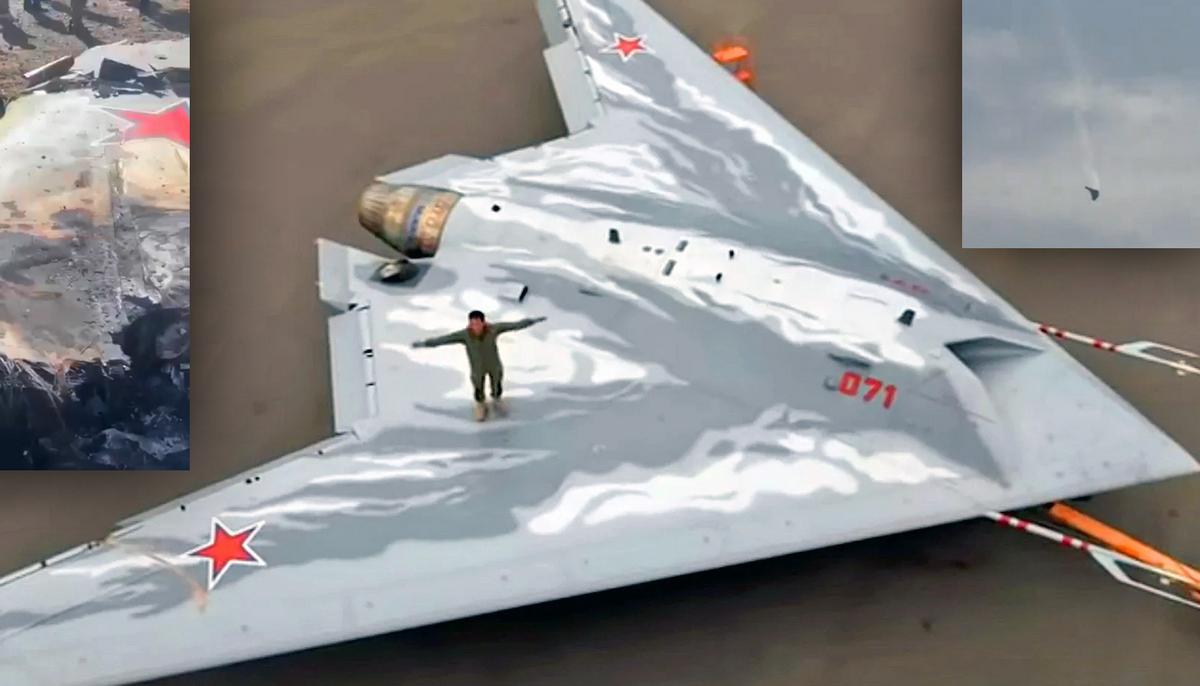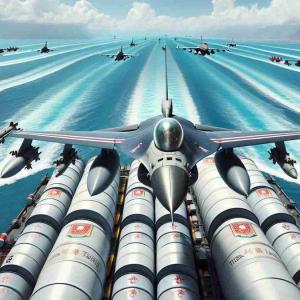The remains of the UMPB D-30 aerial bomb were found in the wreckage of the Russian UAV, the Ukrainian publication Defense Express reported on October 7, which in turn picked up a photo published by Telegram Realna Viina (Real War).
If it is officially confirmed that this weapon, with a maximum range of 90 km, was on board the Russian drone, it follows that the UAV was on an air-to-ground strike mission against a target located somewhat further behind the front line.
We remind you that the Russian drone shot down by an air-to-air missile (most likely launched by a Russian Su-57 plane itself) was flying near the front line, because later it crashed near the town of Konstantyanivka (20 km S-SE of Kramatorsk) in the controlled by Ukrainian troops, approximately 16 km from the front line.
The fact that the Russian Air Force ventured, in broad daylight, with two secret aircraft over the territory controlled by Ukrainian air defenses has at least two reasonable explanations.
Why the Russians ventured two stealth aircraft into Ukrainian-controlled space
The first would be that it was intended to hit a highly important target that is vulnerable to detection and strike only for a short time. These targets fall into the category called "time sensitive targets".
The decision to use this strike scenario would have been made because the target was in a location where there was a high probability of collateral casualties. The UMPB D-30 bomb weighs only 250 kg, while an Iskander-M ballistic missile, available at any time for launch, has a warhead of 480–700 kg and a total launch mass of 3,800 kg.
The "time sensitive targets" category also includes the Patriot or SAMP/T systems brought to the front area for a short time, but above all, they are the object of hitting high military commanders.
We remind you that on October 3, the official information channels associated with General Syrsky reported that he was "in one of the hottest areas at the front", where he awarded the soldiers of the 25th Airborne Brigade. This Ukrainian brigade would fight in the Pokrovsk area, according to recent information from October 2024, the area being 80 km from the crash site of the drone.
It is not excluded that Syrsky remained in the area in the following days. In addition, it is not known precisely when the Russian drone was shot down. Although the first information appeared on October 5, the sources do not specify the exact moment when the drone was shot down, and a time interval of two days is a reasonable one to withhold the publication of such important information, although the wreckage fell in an accessible area civilians. Of course, another senior Ukrainian military commander, possibly President Zelensky himself, may have been in the sights.
If the hypothesis of hitting a time-sensitive target remains taken into account, the question still arises as to why the Su-57 aircraft did not continue the mission on its own. One possibility is that the target was still much further away and only the drone had the mission to penetrate. In broad daylight, even the supposedly stealthy Su-57 would have trouble with air defenses.
The second explanation for such an advanced presence of Russian aircraft is that it could be a demonstration of stealth aerial capability that, however, partially failed. The drone was lost and the wreckage is in the hands of the Ukrainians and the Su-57 took its tail between its legs and ran away from the hostilities zone.
Many more question marks. Why anti-aircraft missiles were not launched against the S-70 drone and the Su-57 plane
In addition to the mystery of a secret mission of the "Ohotnik" (Hunter) drone and the uncertainty regarding the exact moment of its crash, other question marks persist. One of them is why no anti-aircraft missiles were launched against the two Russian aircraft.
One explanation would be the high altitude they were at, probably over 6 – 7 km which is beyond the range of existing front-line MANPADS man-portable anti-aircraft systems. However, it is surprising that missiles from more advanced surface-to-air systems such as Patriot, SAMP/T, NASAMS, S-300, Buk, Hawk, etc. are not launched against them, of which at least one should have find in the area. If none were in the area, the situation looks extremely complicated and worrisome for the anti-aircraft coverage of Ukrainian front-line troops as it follows that almost all medium and long-range systems would be deployed deep into Ukrainian territory for missile protection.
From this perspective, a third hypothesis emerges for the advanced presence of the Russian Ohotnik drone. It would have tested the presence of Ukrainian medium- and long-range surface-to-air systems in order to bring Su-34 aircraft that launch guided glide bombs closer to the front line. However, it is unlikely because the cost proved too high, justifiable only if the drone had been engaged by one of the Patriot or SAMP/T systems which would have thus exposed itself to a very rapid counterattack from an air-to-surface missile right from drone or from the Su-57.
Why did the Su-57 plane shoot down its own drone? Did the Ukrainians and Americans manage to take control of the drone?
Another mystery is that the Russian Su-57 shot down its own drone. The generally accepted explanation is that she stopped responding to commands because contact with her was lost. The short distance between the Su-57 and the drone suggests that there was direct, unmediated satellite communication between the two aircraft, most likely a highly secure one, resistant to jamming and interception.
In this hypothesis, the loss of the radio link was either due to a hardware failure or to the action of a highly advanced Ukrainian or American electronic warfare and/or cyber attack capability , which would have jammed the communication or even took control of the Ohotnik drone.
Going by the last scenario, of a highly advanced Ukrainian/American cyber attack capability, we recall that Ukrainian General Syrsky announced on October 4 that he had spoken with the Supreme Allied Commander in Europe, American General Christopher Cavoli.







